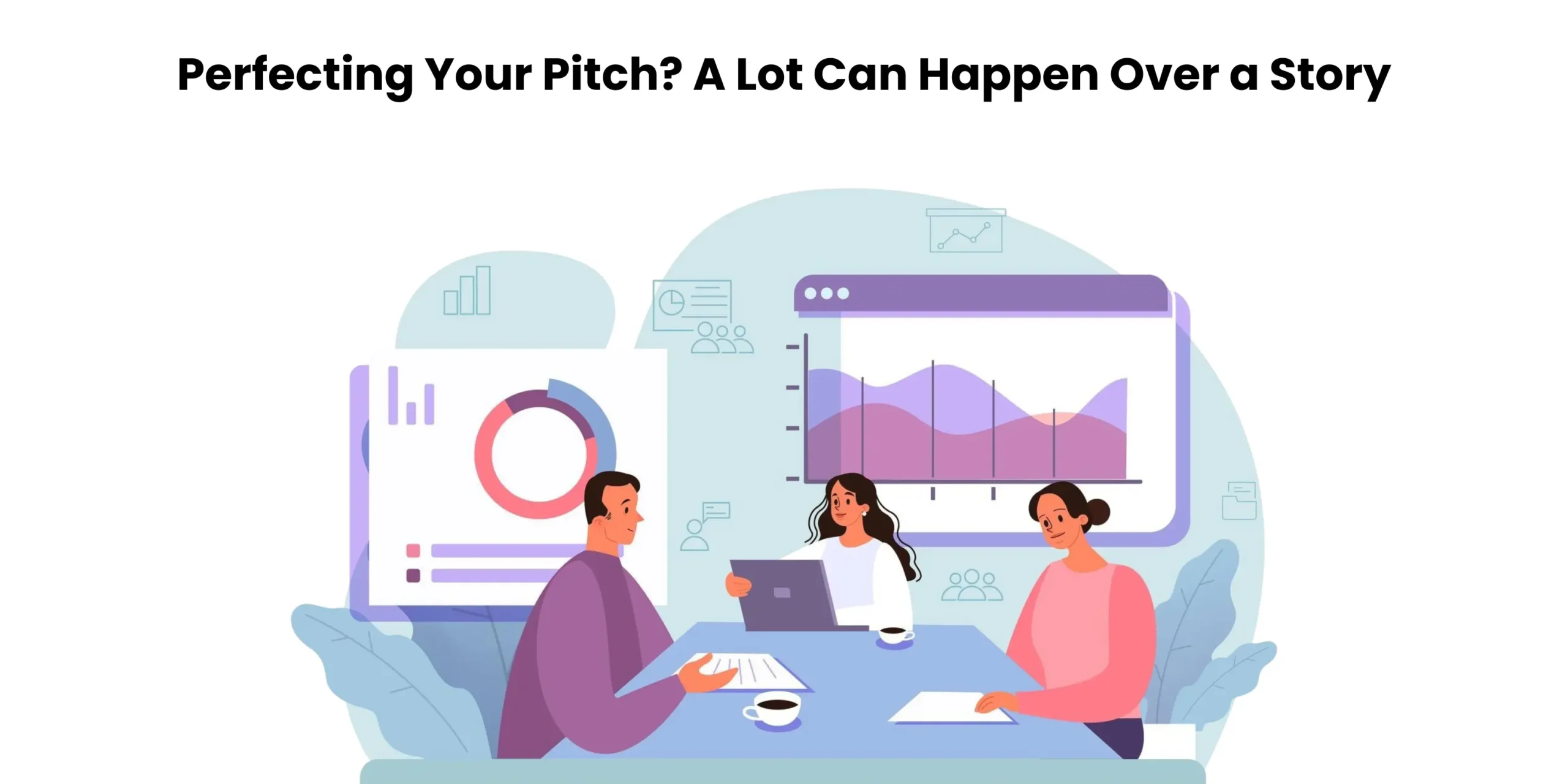
Storytelling for Entrepreneurs: B2B Decision-Making is Not About Data Alone
25 September 2025
- Authentic founder and customer stories trigger an emotional connection that makes logical arguments more compelling.
- While competitors share similar data, authentic stories about real struggles and solutions cannot be replicated by algorithms.
- Smart companies layer human context onto data, helping buyers feel confident about analytically sound choices.
Hitesh Dhamani
Storytelling in B2B decision-making is mostly perceived as something opposed to rationality – stories appeal to emotions; facts relate to the rational mind. However, in reality, storytelling reinforces reasoning and works as an anchor for data.
On the surface, B2B buying in today’s data-driven culture appears to be entirely fact-based. Boardroom decisions lean heavily on spreadsheets, ROI models, and vendor comparison matrixes. But CXOs equally value human experiences.
Stories don’t just inspire; they are remembered 22 times more than facts. Whether you are building a personal brand as a founder or establishing your company’s market presence, it is important to remember that while professional credentials or product features will get you in the room, stories will get you the deal.
A testimonial that relates the experiences of a bank’s customers resolving issues within 15 minutes carries more weight than a slide deck that proclaims ‘50% reduction in customer wait time’.
Take another example. A CFO is evaluating two solutions with similar features, pricing, and ROI projections. Company A presents business metrics and technical specifications. Company B opens with a story about how their founder, a former CFO herself, spent sleepless nights reconciling financial reports manually before building the solution that now saves finance teams 15 hours every week.
Logical reasoning, along with a human narrative, makes for a powerful pitch like no other.
The Neuroscience Behind B2B Decision-Making
To comprehend why stories are effective in B2B, we need to take a look at the science behind human decision-making.
Behavioral economist Daniel Kahneman famously outlined in his book, Thinking, Fast and Slow, that our brains operate through two distinct systems. System 1 thinking is fast, intuitive, and emotional. System 2 is slow, deliberate, and analytical.

This is where it gets more interesting: research shows that System 1 processes information first. When a procurement director reviews your proposal, their brain instantly forms an emotional impression before their analytical mind weighs the numbers.
Stories make this process even more powerful. They activate mirror neurons, the brain cells that fire both when we act and when we watch someone else act. So when you share a customer success story about cutting operational costs, the listener does not just understand it logically; they feel it as if it were happening to them.
The limbic system, our emotional center, is where meaning and memory are formed. Numbers alone light up the rational brain, but numbers wrapped in a story activate both rational and emotional parts of the brain. When an executive says “the numbers make sense,” it means they first used the emotional brain to make the decision and then applied logic to justify it.
This is why storytelling in entrepreneurship is so powerful. It bridges logic and emotion, the way our brains are wired to decide.
The AI Era Makes Stories More Critical, Not Less
AI has radically changed how business information flows. Every company now has access to sophisticated analytics, predictive modeling, and data visualization. As an entrepreneur, you are deriving insights from the same data as your competitors.
However, democratization of data has resulted in the ‘commoditization trap’. When every vendor’s presentation has similar charts, graphs, and statistical projections, decision-makers experience choice paralysis.
As a company founder, you can use stories to create differentiation. Use AI to generate reports about market trends, but back it up with your personal stories of frustration that led you on the journey of building a solution. Use machine learning to identify patterns in customer behavior, but also bring out a customer’s everyday pain points that set them up on the path toward transformation.
Today, the trust gap is growing as algorithms and AI-generated content flood the B2B landscape. Buyers are increasingly skeptical of polished presentations and snazzy case studies. They crave authentic narratives that reveal the human struggles, failures, and eventual triumphs.
Three Psychological Triggers That Drive B2B Buying
1. Trust Through Vulnerability
Trust formation in B2B relationships follows predictable psychological patterns. Counterintuitively, vulnerability builds credibility faster than perfection. When leaders share authentic stories about challenges they faced while building their solutions, they trigger what psychologists call the “pratfall effect.” This phenomenon shows that competent individuals become more likable and trustworthy when they reveal minor flaws or struggles.
Storytelling for entrepreneurs becomes particularly powerful when it includes honest discussions about early failures, customer feedback that stung, or features that initially did not work as expected.
Take the case of Salesforce’s Co-founder and CEO, Marc Benioff. He openly shares stories about his struggles, including nearly losing his largest client in 2013 because they initially had challenges with the platform. He uses storytelling to demonstrate how customer feedback shaped better solutions and stronger partnerships. Such authenticity enhances credibility for a business leader.
2. Safety Through Social Proof
Social proof exists because people determine appropriate behavior by observing what others do in similar situations. In the B2B context, this translates to seeking validation through peer experiences in the form of case studies and testimonials.
Customer journey narratives serve as sophisticated risk mitigation tools. When a CTO hears stories about how peers successfully implemented a solution, their brain processes this as social validation. The story provides emotional safety by demonstrating that others like them made similar choices and achieved positive outcomes.
The most effective social proof follows a specific structure: they identify relatable protagonists (similar company size, industry, or challenge), describe recognizable struggles, and detail achievable outcomes. Generic case studies listing features and benefits cannot match the psychological impact of detailed narratives that help prospects visualize themselves in similar success scenarios.
3. Belonging Through a Shared Vision
Human beings are fundamentally tribal creatures. We make decisions that reinforce our identity and align us with groups we want to belong to. Storytelling and leadership intersect powerfully when leaders craft vision narratives that help stakeholders see themselves as part of something meaningful and transformative.
The most compelling B2B stories tap into universal human desires: the wish to be innovative, solve important problems, and leave a positive legacy. When a technology vendor shares stories about helping healthcare organizations save lives through better data analytics, they are not just selling software. They are inviting buyers to join a mission that extends beyond quarterly performance metrics.
Cultural relevance strengthens the sense of belonging, especially in the global context. When stories reflect local challenges or industry-specific norms, they show real understanding. This builds trust and signals a partnership based on shared knowledge.
The Four-Layer B2B Storytelling Framework
Effective B2B storytelling operates on four interconnected layers that engage both emotional and rational decision-making systems.

Layer 1: Data Foundation serves as the logical anchor. This includes quantifiable results, market research, and technical specifications. Ground emotional narratives in verifiable facts that satisfy analytical minds.
Layer 2: Human Context provides the relatable scenario that helps listeners connect with the challenge or opportunity. Answer questions such as: “Who else faced this situation, and how did it feel?” Add details about people, organizations, and circumstances that make abstract business problems relatable and tangible.
Layer 3: Emotional Resonance creates the psychological trigger that motivates action. Talk about frustrations with current limitations, excitement about future possibilities, or relief at finding a solution.
Layer 4: Future Vision paints the aspirational outcome of your solution. Help prospects envision not just what they will gain from your solution immediately, but also who they will become as a result of the transformation.
Each layer compounds the impact of others. Data without human context feels sterile. Human context without emotional resonance lacks motivation. Emotional resonance without future vision seems manipulative. Future vision without a data foundation appears unrealistic. The magic happens when all four layers work together seamlessly.
Practical Ways Founders Can Build Storytelling into Communication
The idea of storytelling often feels abstract, but it can be made actionable with a few practices:
Audit for sameness:
Review your website, sales decks, and pitch materials. Do they sound like every other competitor? If yes, add narratives that highlight unique founder intent, customer wins, or cultural ties.
Build a story bank:
Collect and document stories from customers, employees, and leadership moments. This ensures you always have authentic narratives ready for marketing, PR, or investor conversations.
Train leadership in narrative communication:
A founder who can tell their story compellingly inspires more confidence than one who only presents numbers.
Embed stories in every format:
From investor decks to LinkedIn posts, ensure every piece of communication balances rational proof with human narrative.
Take Slack for example. Instead of marketing themselves as just another productivity tool, Slack framed its narrative around “making work life simpler, more pleasant, and more productive.” They backed this with customer stories of teams cutting email overload and reclaiming hours of focus time. By embedding these stories across product launches, customer case studies, and leadership interviews, Slack transformed what could have been a functional utility into a cultural shift in how teams work.
Storytelling is Your Competitive Advantage
The fundamental truth about B2B decision-making is both simple and profound: even the most rational buyers are human beings first and data-led decision-makers second. Stories do not undermine logical evaluation processes. They enhance them by providing the emotional context that makes analytical insights meaningful and memorable.
However, effective storytelling in B2B contexts requires more than natural communication skills. It demands understanding of psychological triggers and narrative structures that resonate with sophisticated business audiences. The most successful organizations partner with communication experts who bring both creative storytelling abilities and deep B2B market knowledge.
At Purple Iris Communications, we work with founders, sales teams, and marketing leaders to craft authentic stories that complement data-driven strategies and accelerate business growth.
The stories you tell today determine the relationships you build tomorrow. Make them count.
